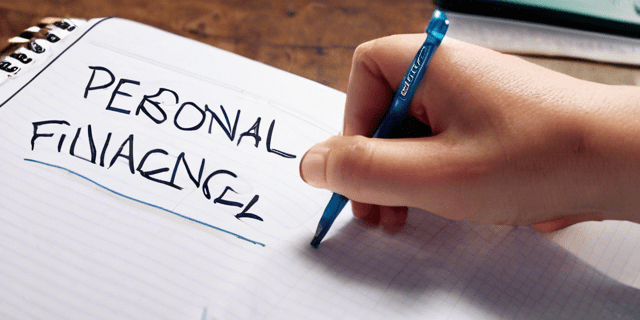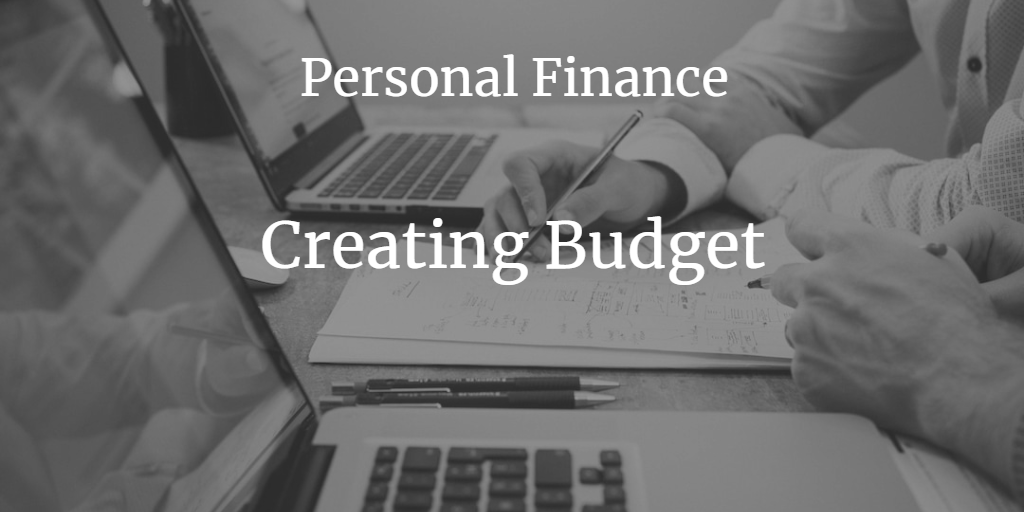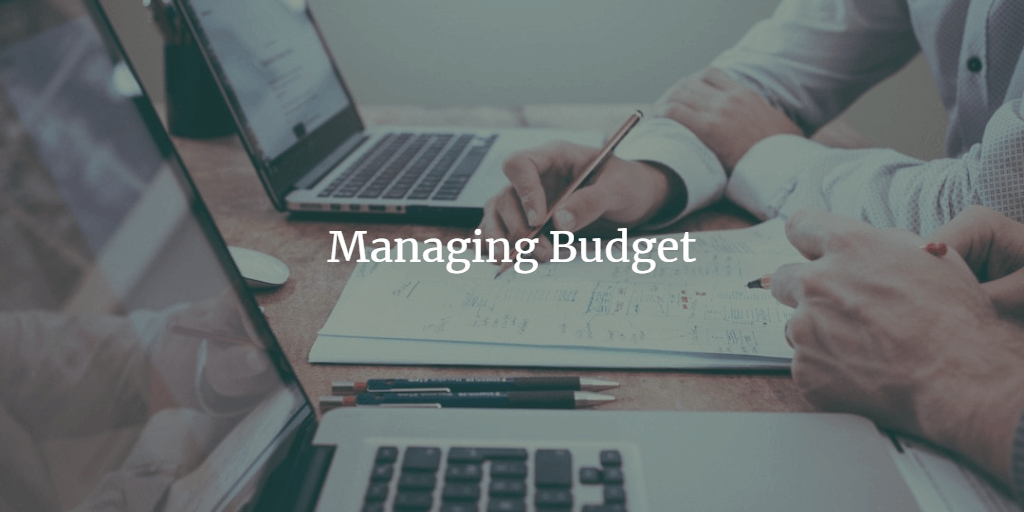In easy terms, Personal Finance is about achieving your own financial objectives. These objectives can be anything like saving for retirement, funding a child’s marriage or education, planning a vacation, or any other personal goal. Personal finance varies from person to person because each individual has different goals, making it a personalized approach.
To create a Personal Finance Plan for 2024 we will cover mostly 5 points
- Risk & Return
- Which assets you can invest in
- How to Make a Budget
- How to protect yourself
- How to grow your money
Risk & Return
The most fundamental rule of personal finance is Risk and Return and that is one rule which most people miss it. Risk and Return are directly proportional to each other. That means if you are going with low Risk then your Return will also be less or an average. But its opposite is not always true which means if you are taking high risk, it does not mean you will get a high return. Your returns will vanish and your investment can go down or you might get good returns. Since there is a fine line between Risk and return and that’s why we must find out the Assets so that the Risk and Return remain balanced.
Which assets you can invest in
There are mainly three categories in the Asset Class
- Low Risk
- Medium Risk
- High Risk
Low Risk
If we talk about Low Risk then we have Fixed Deposit. If we talk about in Indian context, we have EPF (Employee Provident Fund), PPF (Public Provident Fund), and NPS (National Pension Scheme). We can also keep Gold in this category because we don’t see much ups and downs in Gold. Let’s go through each of these Low-Risk Asset Class
Fixed Deposit
It is the most basic and well-known asset class that most of us use. But we should use Fixed Deposits to protect our money because mostly the returns of Fixed Deposits do not even beat the inflation. For example, if you want to park your emergency fund, i.e. protecting your money for emergencies then a Fixed Deposit is the best. Fixed Deposits should not be used for growing the money.
EPF (Employee Provident Fund) & PPF (Public Provident Fund)
EPF is good to have in your portfolio. EPF gives you more than 7% interest and the best part is these are tax-free if you follow some terms and conditions. These are best to protect your wealth as these are pure debt in your portfolio.
NPS (National Pension Scheme)
This is also good but mainly it is good for retirement. At 60 years of age, you will get 60% of the corpus as lumpsum and the remaining 40% will get it as a monthly pension.
Gold
Gold in the form of Jewellery is the worst investment but in the form of SGB is best. SGB or Sovereign Gold Bond is the way to buy gold from the government. It will fetch you 2.5% tax-free interest per year and it matures after 8 years when the profit is also tax-free. The only drawback is that you have to hold the SGB for 8 years. These assets give you low returns (5 to 10%) and you are not taking too much risk for the returns you are getting.
Medium Risk
If we talk about Medium Risk we have Real Estate, Corporate Bonds and Mutual Funds.
Real Estate
In Real Estate you make money through the rentals as well as earn from the value increase of the property. The problem here is that you need a lot of money if you want to invest in Real Estate. Also, your money is illiquid, you will get 100s of problems when you try to sell it or manage it and that’s why it is Medim Risk Asset.
There is also another option which is investing in real estate using REITs. REITs or Real Estate Investment Trusts are publicly traded companies just like stocks. These companies then use that money to invest in real estate. And then the profit is shared among the shareholders.
Corporate Bonds
It is a type of Bond where you pay money directly to the company. Almost every company issues corporate bonds so that they can raise money for a variety of purposes like purchasing equipment or growing the business. These companies give a fixed rate of returns which ranges from 9 to 11%. These are not low risks because if the Company Shuts down your money is lost and that’s why it is medium risk. But we can find out the Credit Risk of the Corporate Bonds so that the risk of a Company going bankrupt decreases like a Company with AAA or AA.
Mutual Funds
A mutual fund is a portfolio of stocks, bonds or other securities which is overseen by a money manager. The money manager researches does analysis and looks at the technicals, fundamentals and whatnot. And we pay the money to them and they manage the money for us.
3 Mutual funds are enough for most people, 1 Large Cap, 1 Medium Cap and 1 Small Cap. If you want to diversify more, then you can also include 1 Flexi Cap in your portfolio. For large cap, the best is to go for the Nifty 50 Index fund because that is the cheapest. For midcap, you can go with any midcap 100 index fund whereas for small you can select any small-cap 250 index fund. Index funds are best because the XIRR of active mutual funds hardly beats the XIRR of index funds.
The best way to invest in these funds is to do a SIP (Systematic Investment Plan) so that your investment units get averaged out monthly. Also, it is good to keep the asset allocation as per your risk appetite. The most basic asset allocation would be 60% in Large Cap, 20% in Mid Cap and 10% each in Small Cap and Flexi Cap. In medium-risk assets, you can get anywhere between 12 to 20% returns whereas there is a risk associated and it can go down to 50%. But if you are investing in these asset classes you need to keep patience and continue investing. It can give very good returns in the long run.
High Risk
If we talk about High Risk we have Stocks Trading
Stocks Trading
Direct stocks kept for the long term are somewhat in between Medium and High Risk but stocks trading daily is very risky. Because you are betting on the price of the stocks, whether it will go up or down which makes it risky.
Crypto
Next is to invest in Crypto. It is very risky because of its volatile nature. It can go up or down like anything even 20% to 30% in one day. It is very risky but highly rewarding too. So if you are planning to invest in crypto, use only that much money which you are ok to lose. I too have invested in Crypto mainly three coins Bitcoin, Ethereum and Hive.
In high risk, there is no upper limit and the lower list is that it can go down to zero.
Creating Budget
If you spend all your money blindly without any calculation then you will never be able to use your money in life. You have to budget everything. The most basic budget is the 50:30:20 rule, where your income is divided into 50%, 30% and 20%. Your 50% is to fulfill your needs, 30% is to fulfill your wants and 20% is for you to save. Your needs are like spending money for your rent, EMI, food, and fees. Your wants are your desires like you want to buy a phone, eat outside, vacation. And saving, which will help you to grow your wealth as well as for your long-term goals like Retirement, child education, Buying a house etc.
Now there is a twist in it when your salary increases. When you get an increment or your salary increases you should not increase your needs and wants money by the same percentage. For example, if you have a raise of Rs 1000, then you should reverse the allocation for this raised amount. Out of Rs 1000, Rs 500 (50%) should go to the savings, Rs 300 (30%) should go to the wants and Rs 200 (20%) should go to the needs. In this way, your savings will as and when your salary increases. In this, over the years your income will be equally split between the savings and needs/wants which will help you to achieve your goals much faster.
Protecting Yourself
It’s great that every one of us wants to become wealthy by following a plan of savings and investing. But before starting your journey it is always better to protect yourself. This is life, anything can happen at any time so you should be prepared to protect yourself from anything that can happen in the future.
To protect yourself, you need only three things
- Health Insurance
- Life Insurance
- Emergency fund
Health Insurance
Health insurance will protect you against rising medical bills or in simple terms medical inflation. If you have to get hospitalized in the future for any reason, health insurance will help you to save that money and thus will not dent your portfolio. Keep in mind that if you are taking the insurance for your parents too, then keep them separate. As the premium increases when the age increases, so if you are clubbing every family member in the same policy then you have to pay a lot of premium.
If you are a corporate employee and if you have health insurance from your company then it’s better to take the individual health insurance also. This is because if you are changing the company then your corporate health insurance gets lapsed. And you become vulnerable for as many days until you join a new company.
Life Insurance
God forbids if anything happens to you then what will happen to your family after you? This is where life insurance comes in handy. You take life insurance and pay a premium, which ensures that if anything happens to your life, your family will get the amount which will help them with their financials. Do note that life insurance premiums usually go higher when your age increases. So it’s better to take Life Insurance at an early age like 25 to 30 years which will ensure that you pay a low premium for the rest of your life.
Note: Life Insurance’s sole purpose should be insurance only and not investment. So always go for Term Life Insurance and not any ULIP (Unit Liked Insurance Plan) or LIC (Life Insurance Corporation of India). These two products give you dual benefits, Insurance and Investment, but it doesn’t have any advantages. The returns are quite low for investment and the insurance cover is also low, but the premium is quite high.
Emergency Fund
A personal emergency fund is the most important thing you should have in your portfolio. It is just like a savings account which is set aside just for emergencies. The money is used to cover unexpected expenses like job loss, car repairs, medical bills which are not covered under health insurance etc.
The minimum emergency fund should be 6 times your monthly expenses. The more the better, but having a minimum of 6 times is required. Emergency funds should be parked in the most liquid type of asset like FD so that it can be accessed very quickly.
Grow your money
We have seen different types of asset classes and now to grow your money you have to invest in these asset classes. We should invest as per our risk appetite but the most basic rule is to invest in equity so that compounding will help your portfolio to grow. For example, if you have started investing in your 20s, your risk appetite will be higher so that you can invest more in equities.
The simple formula is to subtract your age from 100 and the amount you get is the percentage you should invest in equity. Say, your age is 30, then 100 - 30 i.e. 70 per cent should be invested in equity. And in that 70 per cent, you can invest in Large Cap, Medium Cap and Small Cap equity funds. Along with that if you want to take some extra risk, then you can invest some part of that equity percentage in Crypto. The rest 30% should be invested in debt funds which include Debt Mutual Funds, Corporate Bonds, EPF, PPF, NPS, Gold etc.
In this way, you will be getting a medium-risk portfolio and will give a balanced return. When you continue investing in this portfolio for a longer time, you will be able to grow your money. Now, creating wealth is a long-term game, the more time given to the money to grow, the more it grows. This is what the compounding effect is. The rule of 72 says that the return you are getting should be divided by 72 to know how much time it takes to double your money. For example, if the return is 12% then your money will be doubled in 6 years whereas if the return is 8% your money will double in 9 years. And when we continue investing for long terms, our money becomes 2x, 4x, 8x and so on.
So if you have not already made your Financial goals for 2024, then there’s never a better time to start than now. Start now since there are numerous investment opportunities in 2024 and you will see how your relationship with money becomes better in this year.
 Gopesh Sharma
Gopesh Sharma 
 Crafting Financial Success: Your Guide to Creating Budgets That Work
Crafting Financial Success: Your Guide to Creating Budgets That Work